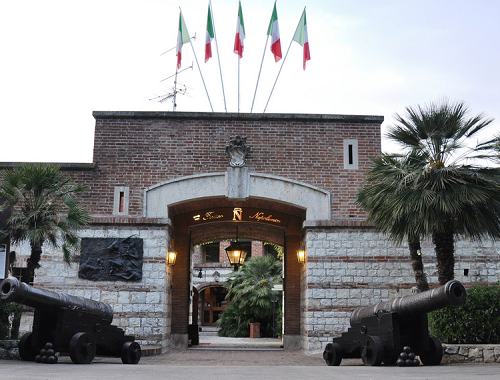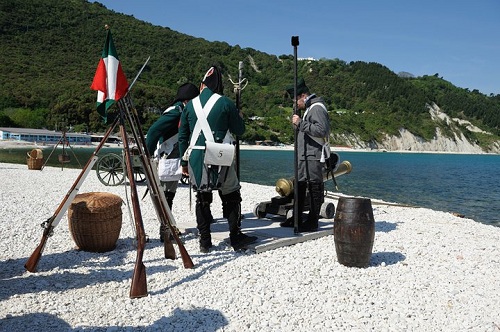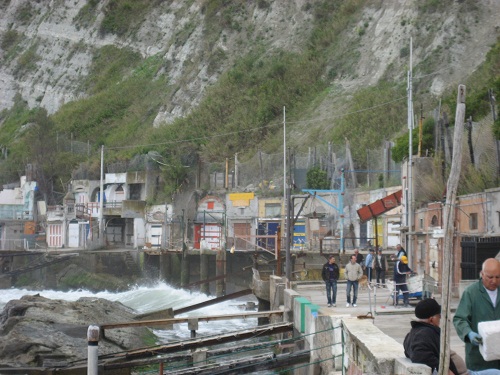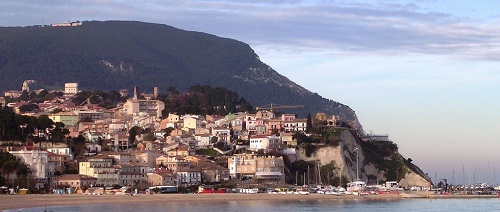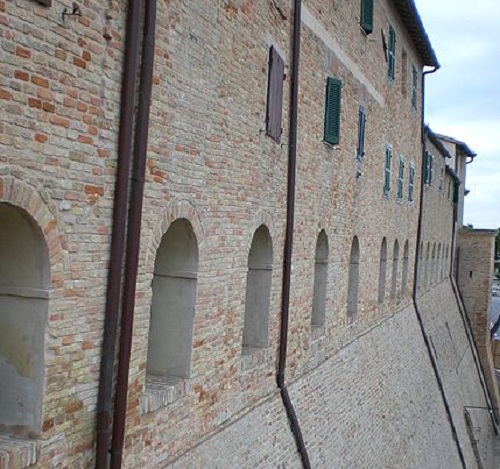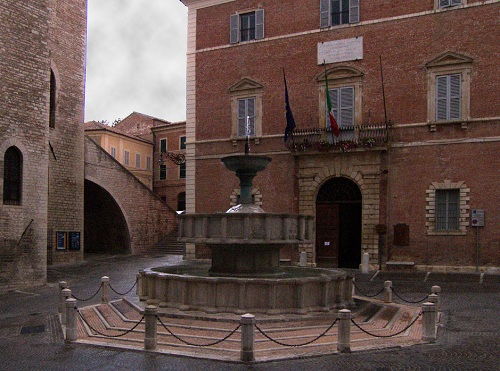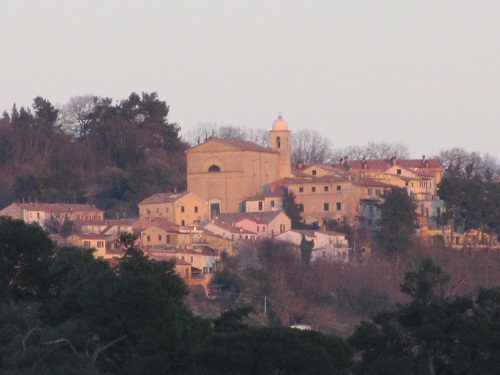The Napoleonic Fort and the Historical Commemoration of the Portonovo Battle
In the splendid Portonovo bay, and far few metres from the sea, rises an impressive military building, a show that you cannot miss: it is the Napoleonic Fort, a rare example of coast fortification.
The Fort has been built up in 1810 during Napoleonic Italian Reign by General Beauharnais as to defend the Ancona southern side, preventing the landing of English fleet ships that looked protection into the bay and water supplies near the spring of Portonovo. Someone tells that building it up there were used the stones of the very close Benedictine Monastery of Saint Mary of Portonovo, destroyed in 1320 by a landslide fell from Conero Mountain.
After the Castelfidardo Battle and after the entry of Marche into the Italy Reign (1860), the fort military function was not more necessary than before and the whole structure fell into disrepair. Successively, around the sixties, it was made an important restoration work respecting the original structure; it was this restoration work that took the Napoleonic Fort to its original magnificence. Nowadays, it works as hotel with restaurant, an ideal place for your stay in this unpolluted area.
Every year in May, Portonovo bay plays host to the Historical Porto Nuovo 1811 Commemoration; unfortunately, the 2012 edition of the historical Portonovo Battle Commemoration will not take place because of organizational problems, due to further commitments organizing Committee and its historical groups have to honour (this news received by Dott. Franco Sestilli, President of the Porto Nuovo 1811 Organizing Committee).
1811: on the 11th March starts from Ancona an unlucky military expedition of the French-Italian fleet against Lissa, held by British forces.
On the 2nd May of the same year, the Royal Navy attacks Porto Nuovo. The raid is pushed back by the garrison that counts several wounded, but prevents a local prize. This episode is told by the chronicles of the historic Antonio Leoni in its “Illustrated Ancona” of the 1832.
In order to keep the marine control of Adriatic Sea, there takes place numerous raids moreover by England, that has at its disposal a powerful fleet composed by capable commanders and well trained sailors, veterans of many sea battles, but also our Ancona pirates serving Napoleon do create a certain fame, that with cunning and courage make huge enemy booty.
The coasts protection is given to the numerous batteries depending on the Ancona Command, capitol of the former Metauro Department, and important port of the Italic Reign, always allied of France.
Two of these batteries, provided with heavy artillery munitions, are positioned as strategic defense of the Calcagno Bay: the first one, where then will rise the famous Fort, now restored; the second one, of which there remains few ruins on a crumbly ground, upon the ridge overlooking the Trave natural reef. These positions allow our coast guard gunners to effect cross shoot in the facing stretch of sea against their attackers.
But the aim of these defenses was also the one, nonetheless important, to prevent the landing to the hostile crows that needed water supply to the close water spring that, from the foot of the Conero Mountain, flows out near the bay.
For its important and rare natural resource, the Spring was mapped on charts of that time and made it known and sought-after to the sailors.
These are the themes of the research we want to propose to public attention through a historical commemoration possible by a faithful interpretation of our re-enactors.
Source: portonuovo1811.jimdo.com
Historical Group LA GUARNIGIONE (THE GARRISON)
Historical Napoleonic Group CORSARI ANCONETANI (ANCONA PIRATES)
Del Porto NUOVO (dal “Portolano” di Ignazio Prina, 1816)
Monte Conero, o Monte d’Ancona = Torre Latitudine 43° 33’ 19’’ – Longitudine 11° 16’ 30’’
Sotto il Monte Conero e due miglia e mezzo prima di arrivare alla Punta che s’avanza nel Mare, la Costa trarupata si insena nello spazio di poco più di un miglio, formando l’ansa denominata Porto Nuovo. Questo offre ad ogni Legno opportuno ricovero a ridosso da un lato dai venti che soffiano da Maestro, da Tramontana e da Greco; e dall’altro quelli da quelli di Ostro-Scirocco, trovandosi però esposti all’impeto dei Venti che girano dal Greco–Tramontana al Scirocco-Levante. I Pratici non danno fondo in questo Porgitore, che nella circostanza in cui vedono di non poter guadagnare il Porto d’Ancona, non convenendo per rimanervi a rilasso. E’ difesa cotesta Rada da due Batterie laterali, ed ha il fondo di sabbia mista con ghiaja, e sparso in alcuni siti, e specialmente verso la Punta del Piano su cui esiste la Torre a Scirocco entrando, di scogli che taglierebbero le gomene delle ancore, quando acconciamente non si alleggiassero, siccome in tali casi si usa. Dalla Parte di Ponente, uno scoglio detto il Trave parte dalla Costa scoperto, e si diffonde sott’acqua per l’intervallo di un terzo di miglio direzione di Scirocco-Scirocco-Levante, non senza essere di pericolo ai Bastimenti che vi si avvicinassero. Sopra lo stesso Trave vi sono diversi Punti fissi per formare le amarre dei Legni che si ricoverassero in quest’Ansa. La Torre, che ben distinguesi sull’imminente alta sommità del Monte Conero, la Chiesa della Madonna sotto lo stesso Monte e nel Porto medesimo; come pure la Torre, che vedesi più vicina alla Bocca entrando, sono oggetti rimarcabili per la Riconoscenza di questo Ancoraggio: ma per entrarvi bisogna governare per Greco-Levante la Cima del Monte Mezzaluna, che stà quasi in mezzo del Seno che costituisce il Porto. Si noti altresì che col Vento fresco di Ponente formansi de’ vortici tali alla Bocca di Porto-Nuovo, che si esporrebbero a qualche rischio coloro che vi abbordassero senza la pratica cognizione locale.

